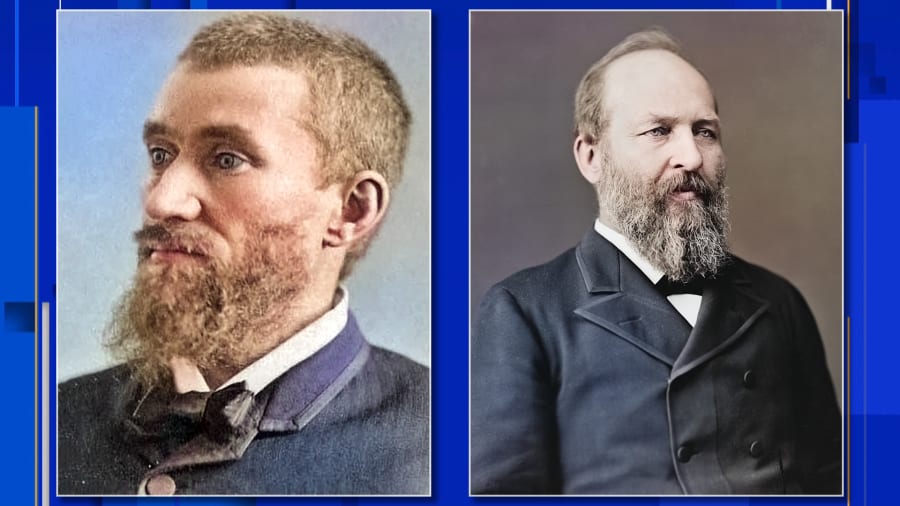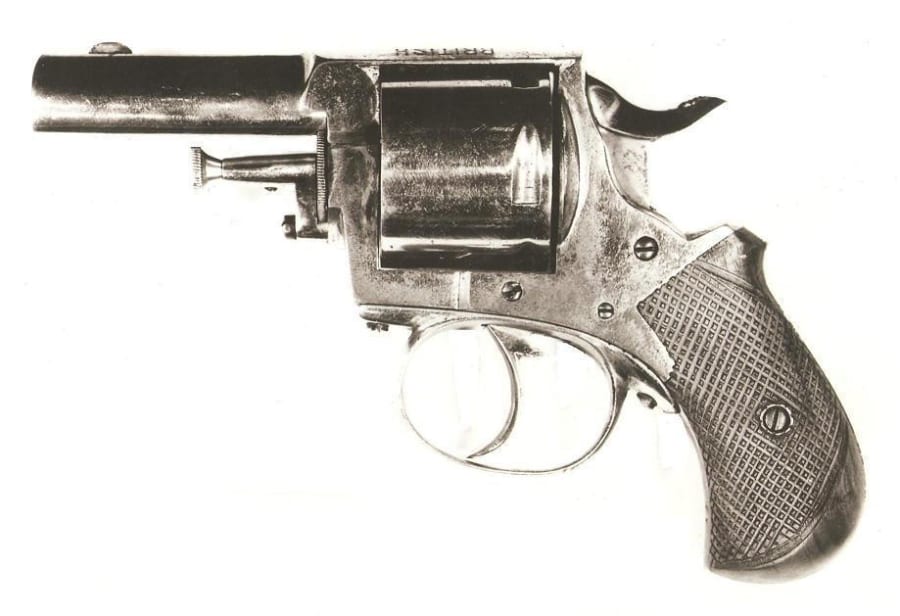ANN ARBOR, Mich. – Michigan -- the United States’ high-five to the world -- has always been deeply important to American politics.
At a campaign event in March 2020, Gov. Gretchen Whitmer told the crowd, “All roads to the White House lead through Michigan.”
Recommended Videos
In the grand scheme of things, there has been Michigander who shaped impacted the presidency more than any other. Even more than the Michigander who literally became a president.
His name is Charles J. Guiteau.
The Michigan Connection is a ClickOnDetroit feature series that covers the sometimes strange ways the Great Lakes State has helped shape the world.

The Pioneer High School dropout who joined a weird sex cult and killed a sitting US President
Right out of the gates, I want to warn you that Guiteau’s life -- while strange -- is actually quite sad. Not sad enough to condone the assassination of President James. A Garfield, but still very sad.
A lot will be left out -- Guiteau’s marriage, his parents, the continual string of skipping out on bills at hotels and inns across the county, being committed and escaping an asylum, and other events -- and parts will be summarized and lacking detail, but this super-condensed version will still be long.
Guiteau was born in Illinois in 1841. When his grandfather died, he inherited $1,000 and moved to Ann Arbor to attend the University of Michigan, where he promptly failed the entrance exam.
He enrolled at Ann Arbor High School (since renamed Pioneer High School) to better prepare himself for the U-M entrance exam, but dropped out before graduating.
After leaving Ann Arbor schools, Guiteau joined the Oneida Community, a religious sect in New York that had complex marriages and shared sexual experiences where older women became sexual mentors to young adolescent boys since there was little chance of impregnation between the two.
Despite his five years in the community, he was never involved in the activities and was nicknamed “Charles Git-out.”
After some rebranding, the Oneida Community is still around today, 180 years later. It is now Oneida Limited, the largest supplier of dinnerware to the food service industry in the country. I’m not sure how they decided to shift gears from polygamist religious sect to silverware, but it was the right choice, apparently.
Years later, Guiteau tried to start his own religious sect by plagiarizing the work of Oneida founder John Humphrey Noyes. It didn’t take off, nor did it make silverware.
A near-death experience in the Connecticut River
After surviving a boat crash that killed at least 50 people, Guiteau believe he was spared for a higher purpose.
Guiteau turned to politics and during the 1880 presidential campaign, he wrote a speech in support of Ulysses S. Grant. He passionately and firmly believed that Grant was the right man for the job. In his heart-of-hearts, he knew he would be supporting Grant unconditionally because he was the President the U.S. needed. He would not compromise.
When the Republican presidential nomination was given to James A. Garfield, Guiteau compromised, but continued to use the same speech but with minor tweaks, like replacing Grant’s name with Garfield’s. In his heart-of-hearts, Guiteau knew Garfield was the President the U.S. needed.
This may come as a shock, but Guiteau was not a stable man.
The new speech gave Garfield credit for Grant’s service during the American Civil War and other accomplishments.
Garfield won the 1880 U.S. General election over Democratic candidate Winfield S. Hancock.
Guiteau believed his speech, "Grant Garfield against Hancock," was entirely responsible for Garlield’s win.
He had given the speech twice, at most. Once to a crowd of 12. Guiteau was not a stable man.
Due to his belief that his speech was the sole reason Garfield won the election, Guiteau believed he was owed a job and began to lobby for a consulship in Paris. He sent countless letters to the White House and even met with Garfield, where he handed him a copy of “Garfield Against Hancock” that he had written “Paris Consulship” on the cover page.
Guiteau believed this was his higher purpose and wrote letter after letter to the White House, the State Department and other high-ranking officials regarding the position he felt he was owed.
On May 14, 1881, Guiteau approached Secretary of State James G. Blaine in person and told him he was responsible for the letters and asked if there was any updates with his appointment.
“Never speak to me again on the Paris consulship as long as you live!” Blaine shouted.

An office or your life!
Guiteau felt betrayed by the Republican Party and after his encounter with Blaine, he felt the only thing left to do was to remove Garfield from office. He did not consider killing the president an assassination, but a removal from office.
When looking for a gun, Guiteau purchased a revolver with an ivory handle because he felt it would look good in a museum.
He stalked Garfield for several weeks and even sent a letter to the William Tecumseh Sherman, the Commanding General of the Army, to request protection from people after he killed the president.
On July 2, 1881, Guiteau waited for Garfield at the Baltimore and Potomac Railroad Station. He shot Garfield twice -- once in the shoulder and once in the back. As Guiteau turned to flee, he immediately ran into a police officer, who had entered the train station when he heard gunfire.
He was taken into custody.
Garfield, still conscious and alert, was taken to the White House. Doctors attempted to find the bullet in the president’s back. They did not wash their hands, they did not sterilize their tools.
After three weeks of cutting new holes in the president and sticking their unwashed fingers inside to find the bullet, they turned to technology for help. Kind of.
Alexander Graham Bell, the inventor of the first practical telephone, had developed an early metal detector that was used to try to locate the bullet. Doctors continued to probe and dig around inside the president, unaware that the metal detector was being set off by the metal springs in the bed Garfield was on.
The new wounds became infected, causing pneumonia and sepsis. Garfield died Sept. 19, 1881, nearly seven weeks after being shot.
Modern doctors believe he could have survived had they left the bullet in.
‘I am Going to the Lordy’
Guiteau went on trial in November, where he received significant media attention for his bizarre behavior, where he insulted his defense team, testified in poems and literally asked people watching the trial for legal advice during the trial.
Guiteau made plans to start a speaking tour after the trial ended and eventually his own run for president. They didn’t pan out.
The trial lasted two months. He threatened the jury in his closing statement and then was surprised when he was convicted of murder.
Guiteau was sentenced to be executed. He believed President Chester A. Arthur would pardon him since Arthur took on the presidency after Garfield’s death. That did not happen.
Before his execution on June 30, 1882, Guiteau was allowed to recite a poem he had written that morning. He had requested an orchestra play him as he read “I am Going to the Lordy,” but the request was denied.
Memorials to Garfield we built across the country that still stand. Famed American composer John Philip Sousa wrote a funeral dirge for the fallen president.
Guiteau’s body was buried where he was executed, but was later dug up and sent to what would become the National Museum of Health and Medicine, where his brain and spleen were preserved. Part of his brain is on display at the Mütter Museum in Philadelphia.
More: Features



